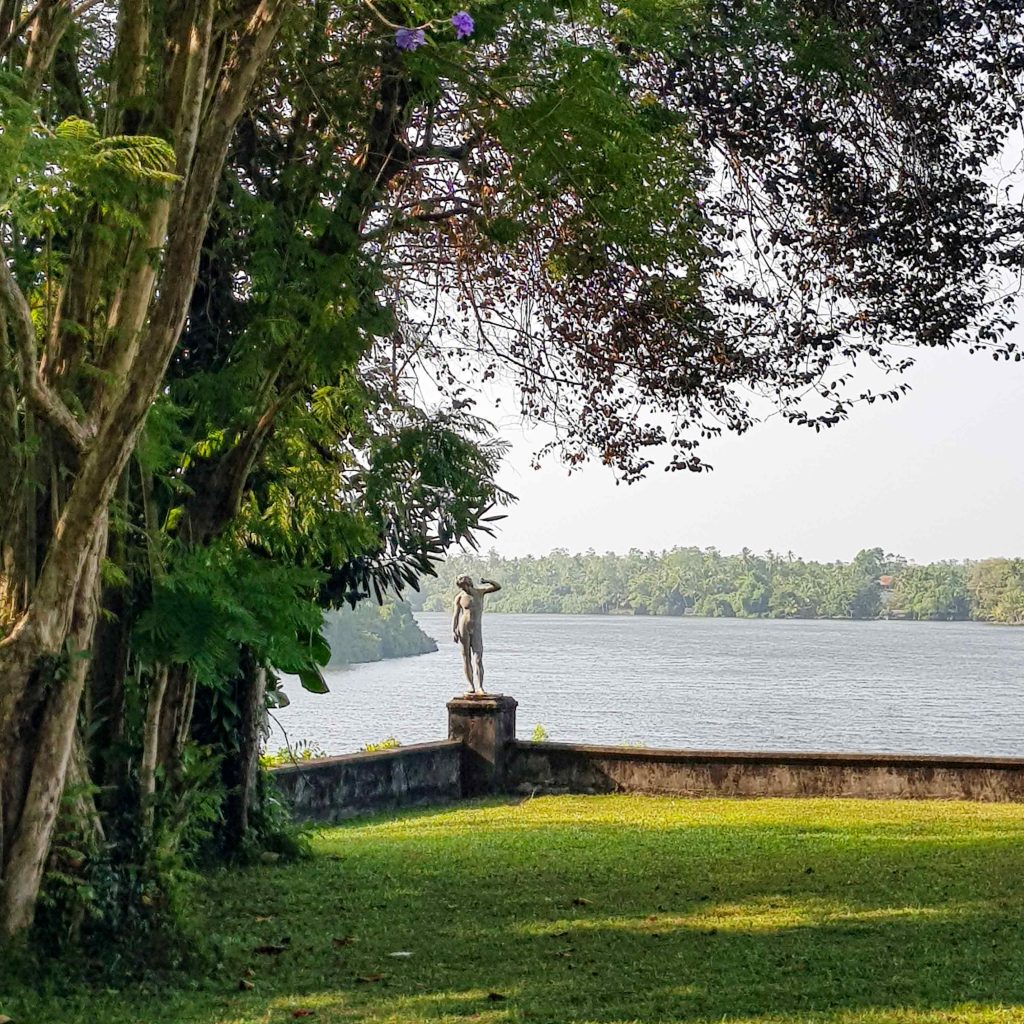A night at Geoffrey Bawa’s iconic countryside estate
What a difficult place to write about. I know I cannot do it justice with words. It is an architect’s country estate for goodness’ sake. It’s the kind of place where you get the feeling that every single thing – every fixed and movable feature – has been deliberately made, designed and/or placed exactly where it is. Including but by no means limited to:
- the tree in the middle of the driveway as you approach the residence, which forces you, as you swing the car around a tight turn, to stop and think will I go right or left of this tree, and how will I turn around – in other words, as I see it, to arrest your attention;
- of course the various artworks and installations dotted throughout the property, most of which date from Bawa’s time in residence;
- the landscaped hill opposite the entrance to the main building that allows people only 6 foot or taller (Bawa was 6’5) to see Dedduwa Lake South – across the top of the the same hill where Bawa’s ashes are now buried;
- the sunken road (inspired by English ha-has) which hides from sight people and vehicles coming and going (apparently Bawa didn’t like the water view from the breakfast place to be disturbed by such movement)
- and last and best of all – the 14 bells, each with a unique ring (so that his staff knew exactly where he was and what was called for), in 14 precise locations where Bawa liked to undertake certain activities or spend a certain time of the day. Some of the standouts:

Morning tea. As in the cup of tea you have when you first wake up. This is by the butterfly pond.

The breakfast table. In front of the main entrance with views of both Dedduwa Lake South (if tall enough) and through the house, to Dedduwa Lake North

The garden room, where Bawa liked to read

The lunch table, complete with a cow shaped bell brought from Burma.

The garden bell, overlooked by a folly providing afternoon shade for reading

The G&T spot. Overlooking the water and with the sun setting to one’s left, I can imagine Bawa might have rung this bell a few times.
The remaining eight were more for guest use, given some of the rooms are a distance from the main residence and kitchen. This includes the gate house, which sits above the sunken road and connects to the southern side of the property via a walkway called Lucky’s Verandah, thanks to the beautiful Ramayana mural painted by famed Sri Lankan artist Lucky Senanayake.
I only stayed a night and didn’t have time to spend sufficient time in the different spaces. A two or three night stay would be ideal – to just float around . . . and maybe ring a bell or two.
Thanks to Nuwan for showing me around. Well done to Teardrop Hotels for managing the property skilfully.
Lunuganga features in our Bawa and Beyond private tour of Sri Lanka itinerary